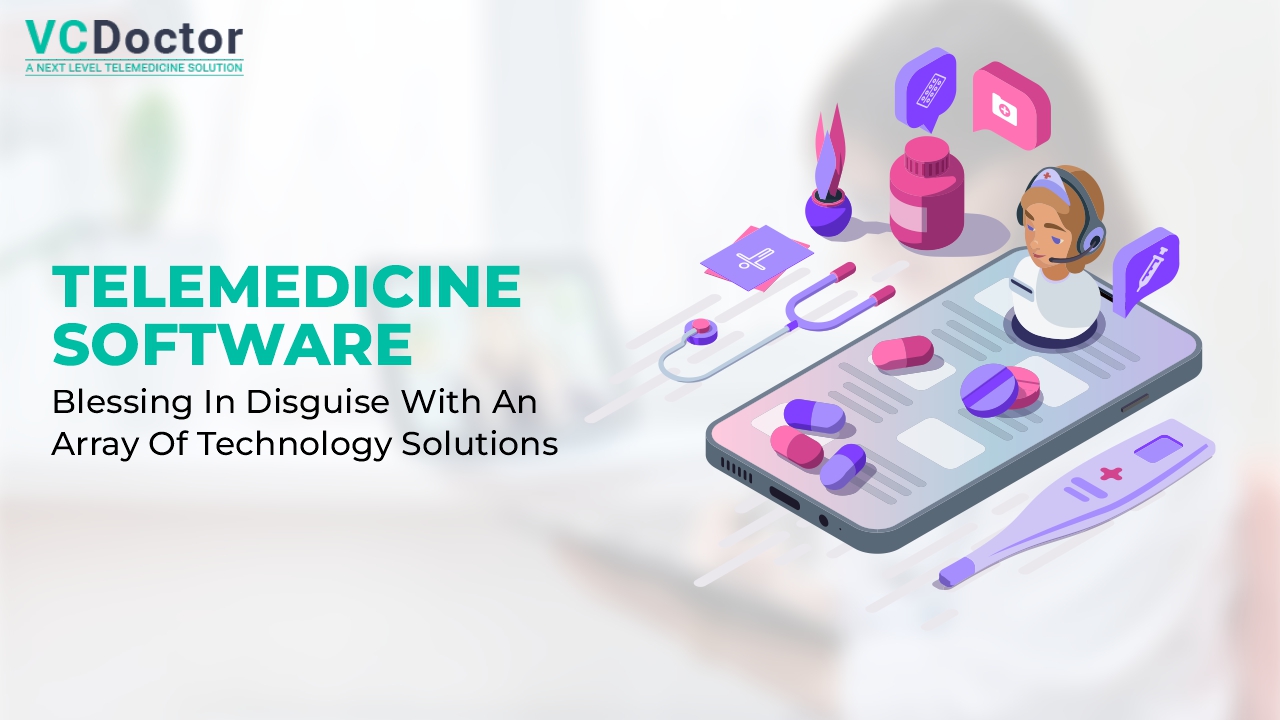Telemedicine Software – A Blessing in Disguise with an Array of Technology Solutions
The healthcare sector has been blessed with telemedicine software solutions that have brought remarkable transformation in this field. Telemedicine software solutions are at the forefront of this transformation that has broken down geographical barriers, bridged the gap between patients and healthcare providers, and revolutionized the way medical services are delivered. The telemedicine market is expected to reach about $173 billion by 2026, according to EMR’s Global Telemedicine Market Outlook, and hence the demand for telemedicine software is also expected to grow dramatically in the next five years. Today with a great number of people seeking remote medical services, telemedicine software has become a vital part of the healthcare sector. Telemedicine software is ensuring that people receive the care they need, no matter where they are. Telemedicine software has been a boon in medical history and is continuously striving to enhance medical facilities by providing robust solutions.
Components of Telemedicine Software Solutions
Telemedicine refers to the remote provision of healthcare services using telecommunications technology. This includes video conferencing, real-time chat, and other digital communication methods. The concept isn’t entirely new; however, advancements in technology, coupled with the global need for accessible healthcare, have propelled telemedicine into the forefront of medical practice. Vital components of telemedicine software include:
Video Conferencing Platforms – One of the cornerstones of telemedicine software is the ability to conduct virtual consultations. Video conferencing platforms allow patients and healthcare providers to interact in real-time, mimicking an in-person visit.
Secure Communication – Privacy and security are paramount in healthcare. Telemedicine software solutions incorporate robust encryption and data protection measures to ensure that patient information remains confidential.
Electronic Health Records Integration – Seamless integration with electronic health records streamlines patient data access and enables healthcare providers to make well-informed decisions, even in a virtual setting.
Appointment Scheduling and Reminders – Telemedicine solutions often come with built-in scheduling tools that allow patients to book appointments conveniently. Automated reminders help reduce no-show rates and improve patient engagement.
Prescription and Pharmacy Integration – Healthcare professionals can electronically send prescriptions to pharmacies, enhancing the overall patient experience and eliminating the need for physical visits solely for prescription renewals.
Benefits of Telemedicine Software Solutions
Telemedicine software without any doubt is a win-win situation for both patients and healthcare providers alike, as it makes non-acute medical care more convenient for patients and provides doctors with a more flexible and efficient workflow. Telemedicine software solutions give healthcare providers complete access to patients’ complete information more regularly that allow patients to enjoy better continuity of care. Some of the key benefits of the software solution include:
Accessibility and Convenience – Telemedicine breaks down barriers to healthcare access, particularly for individuals in remote areas, those with limited mobility, and those with busy schedules. Patients can receive quality medical care without the need for extensive travel.
Time and Cost Savings – Patients save time and money by eliminating travel and waiting room time. Telemedicine also reduces overhead costs for healthcare providers, leading to potentially lower costs for patients.
Improved Continuity of Care – Patients can consult with their regular healthcare providers, fostering a consistent and ongoing relationship, which is essential for managing chronic conditions and overall well-being.
Reduced Disease Transmission – Especially important during pandemics and disease outbreaks, telemedicine helps reduce the risk of disease transmission by minimizing in-person contact.
The future of telemedicine is promising. As technology continues to advance, we can expect improved integration of artificial intelligence for diagnostic assistance, remote patient monitoring through wearable devices, and even more sophisticated virtual reality applications for immersive medical experiences.
Conclusion
Telemedicine software solutions have emerged as a transformative force in the healthcare industry, enhancing accessibility, convenience, and patient-provider interactions. While challenges like the digital divide and regulatory concerns persist, the potential benefits far outweigh these hurdles. As we look to the future, telemedicine is set to play an increasingly integral role in shaping the way healthcare is delivered and received, ultimately improving the well-being of individuals around the world.
FAQ
What is telemedicine software?
Telemedicine software allows remote healthcare services by facilitating online doctor consultations, medical diagnosis, and treatment through video calls, chat, or other virtual means. It streamlines communication, data sharing, and medical advice, enhancing patient access and convenience while maintaining healthcare standards.
Which is the best telemedicine software?
VCDoctor is the best HIPAA-compliant white-label telemedicine software that brings doctors and patients together on a single platform, thereby allowing easy and effortless communication between patients and doctors. This comprehensive all-in-one solution has revolutionized the healthcare sector and is extensively used by hospitals, clinics, and telemedicine businesses in over 16 countries.
What are the features of a telemedicine system?
Telemedicine systems typically offer video conferencing for remote consultations, secure patient data storage, appointment scheduling, prescription management, and real-time communication. They ensure HIPAA compliance, support medical documentation, and provide tools for diagnostics, enhancing remote healthcare delivery.
What is the use of telemedicine technology?
Telemedicine technology allows remote access to medical services, connecting patients and healthcare providers virtually. It’s used for online consultations, diagnosis, treatment, prescription management, and monitoring of health conditions, improving healthcare accessibility, reducing travel, and enhancing medical efficiency.




